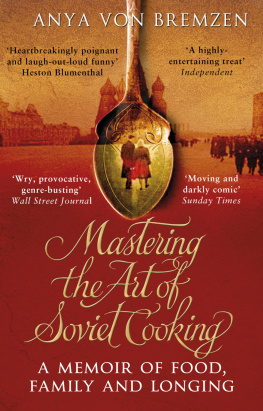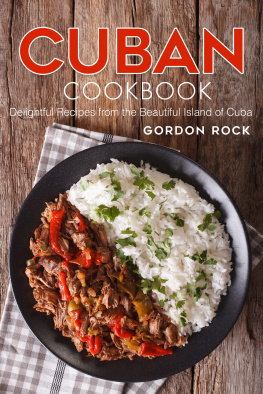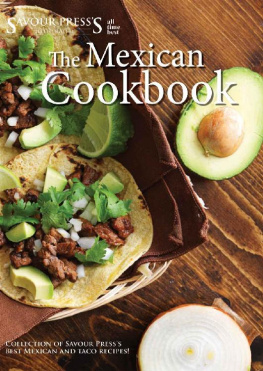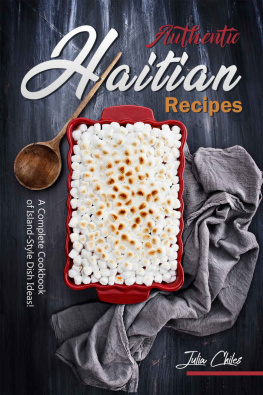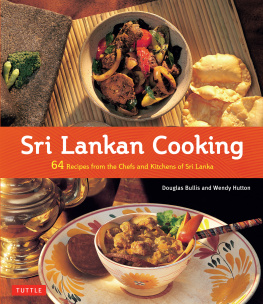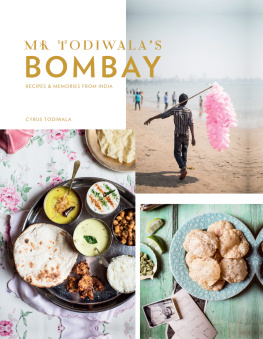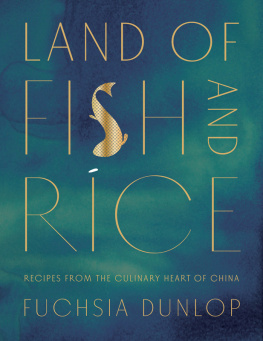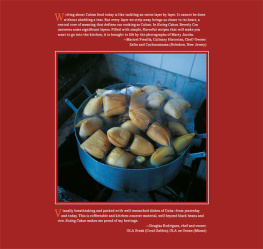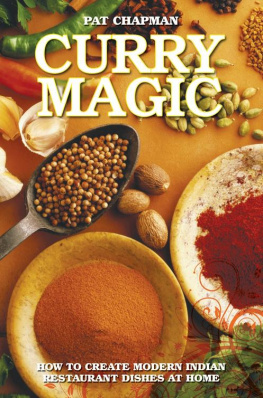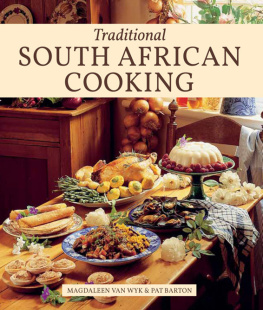



CONTENTS
BOCADITOS Y APERITIVOS
Snacks and Appetizers
SOPAS
Soups
VEGETALES Y VIANDAS
Vegetables and Roots
ARROZ, FRIJOLES, Y TAMALES
Rice, Beans, and Tamales
PESCADOS Y MARISCOS
Fish and Seafood
POLLO, PATO, Y CONEJO
Chicken, Duck, and Rabbit
CARNE
Meat
DULCES
Sweets
BEBIDAS
Drinks


BOCADITOS Y APERITIVOS
Snacks and Appetizers
SOPAS
Soups
VEGETALES Y VIANDAS
Vegetables and Roots
ARROZ, FRIJOLES, Y TAMALES
Rice, Beans, and Tamales
PESCADOS Y MARISCOS
Fish and Seafood
POLLO, PATO, Y CONEJO
Chicken, Duck, and Rabbit
CARNE
Meat
DULCES
Sweets
BEBIDAS
Drinks


INTRODUCTION
The early 1990s in Cuba. Recently dumped by its economic patron, the USSR, this revolutionary island nation in the Caribbean was on the brink of starvation. Stomachs rumbling from a supper sometimes consisting of nothing more than sugared watereuphemistically called sopa de gallo [rooster soup]Cubans sat glued to their TV sets, distracted from their daily struggles and privations by a sexy Brazilian telenovela called Vale Todo (Anything Goes). Its rags-to-riches Cinderella plot revolved around a leggy beauty named Raquel who moved to Rio from the Brazilian hinterlands, started selling sandwiches from a basket on Copacabana beach, and eventually turned into a capitalist princess after setting up her own chain of small restaurants. Paladaresmeaning palatesis what she called them.
Our entire suffering island was besotted with this clever, enterprising Raquel, remembers the Havana restaurateur Niuska Miniet. Raquel, her sandwiches, her wild business successthey were the envy of Cuba, adds local food journalist Alicia Garca. Cubans hadnt seen such entrepreneurship themselves since Fidel Castro banned all private economic activity in 1968 and nationalized pretty much everything, including restaurants. But in 1993, in the so-called Perodo Especial, when Cuba faced economic catastrophe and drastic shortages of basic essentials, El Comandante announced a wave of economic reforms. These included legalizing more than one hundred self-employment occupationsamong them, those in the food sector. And so were born Cubas paladares: small, homegrown eateries officially licensed to sell food to both locals and tourists, their name borrowed from that Brazilian telenovela. Tiny islands of capitalism in a socialist sea (as they were later dubbed), the first paladares were mere homey mom-and-pop speakeasies, rudimentary eateries required by law to operate out of private homes, with no more than doce sillas [twelve chairs] and at least two family members as employees, and no serving of beef, shellfish, orinexplicablyhorsemeat.
Then what did they serve?
Call it survival fare, says Niuska, with a sardonic laugh. Her paladar, Decamern, is one of the few originals remaining from the 90s. We improvised from whatever scant foodstuffs were availableeven while authorities were constantly trying to close us down on bogus law violations.
Fast-forward two and a half decades. Havana, circa 2017. A hipster crowd of international DJs and local designers and artists gathers on the rooftop terrace of El Del Frente, a Habana Vieja bote where dinners often morph into dance parties. Jimi Hendrix cranks from the sound system. Coolest of hosts Jos Carlos Imperatori delivers gin and tonics strewn with fresh rose petals to a posse of models cling-wrapped in tight dresses, as servers rush around with plates of curried fish croquetas with citrusy avocado dip, tangy ceviches, and seductively charred baby octopus. If it werent for the humid air polluted with fumes from ancient American Chevysplus a sudden electrical blackout, typical in this ramshackle part of Habana Viejathis could be Berlin or Miami.
Earlier, a few miles west of here in the stately Miramar district, a beat-up delivery truck from the organic uber-farm Finca Marta pulled up outside the strikingly modern gastro-bistro Otramanera to unload dewy mustard greens and artisanal honeys. On the menu at Otramanera tonight: guava gazpacho, a tartare of avocado and creamy mozzarella made by a not entirely legal local cheesemaker, and pork cooked sous vide for ultimate succulence. Deeper in Miramar, at paladar Casa Pilar, Spanish expats, international diplomats, and Cuban entrepreneurs order the ultra-smooth salmorejo [a type of gazpacho] that owner Pilar Fernandez whirs in a high-tech Spanish gadget called a Thermomix. Theyll follow that with a bowl of her earthy stew of garbanzos and lobster.
Elsewhere in Havana, one can sample molecular-gastronomy-inspired tapas at Paladar Elite, enjoy soulful Russian soups with a sea view at Soviet-themed Nazdarovie, have an expertly charred Italian flatbread at paladar Mediterraneo Havana, or inhale the sweet earthy scent of tamales made with just-grated corn at the locavore paladar Hecho en Casa. In Old Havana, the Platonic ideals of ropa vieja and frijoles negros await at folkloric Doa Eutimia, followed by a slice of rich chocolate tart at boho-chic Dulceria Bianchini or perhaps a slushy mojito sorbet at the bright ice cream boutique Heladoro. Where to eat the next day? Why not log on to the still-unreliable Internet and consult the nifty site from an innovative digital start-up called AlaMesa, dedicated to Cubas emerging restaurant scene.
All of this is recent in the extreme, made possible by a powerful wave of liberalizing reforms kicked off in 2011 by Fidels brother, Raulpolicies that allowed paladares to expand in scope and ambition. All of this is extremely precarious, too, as occasional crackdowns on paladares continue, restaurant owners still struggle, and every time we return to Cuba we hold our breaths wondering if the places we love are still there (indeed some of the paladares we feature closed as this book went to print). Rauls socialist government still hems and haws about private enterprise, and the one-step-forward two-steps-back pace of reform remains classically Cuban. Still. The sea change in Cubas dining landscape, ravaged by decades of shortages, has been extraordinary. Its a miracle, really, to find so much sabor and ambition in a country where the most enduring joke has been:
Next page

